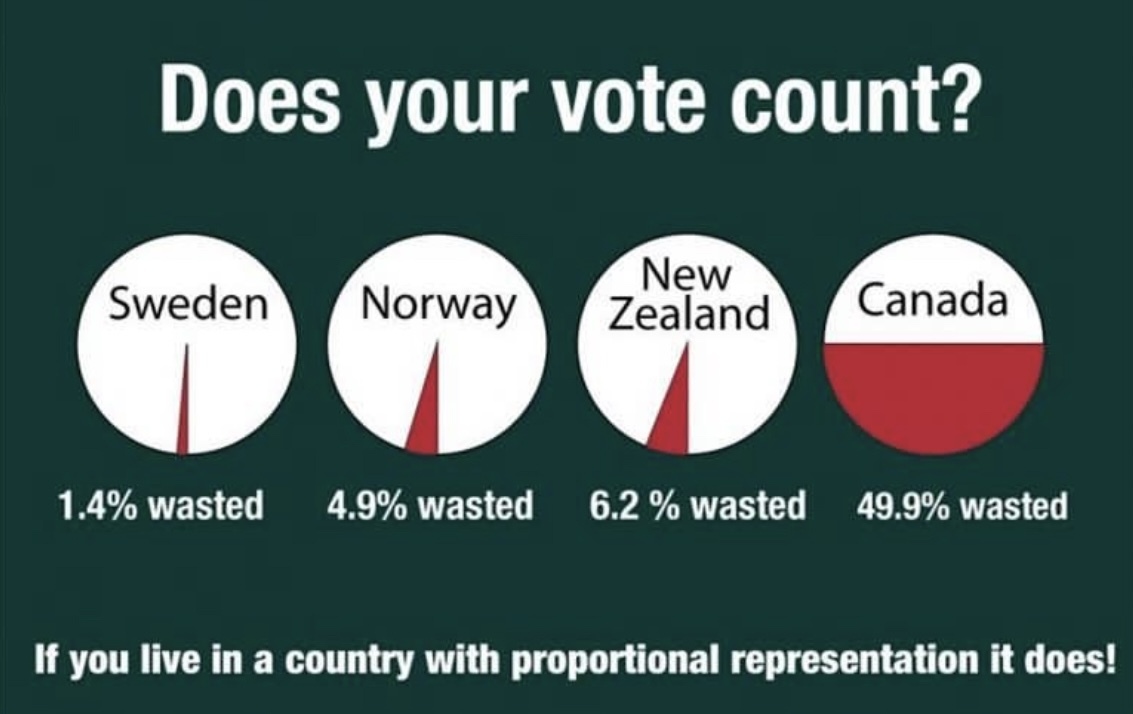Fairvote Canada
What is This Group is About?/De Quoi Parle ce Groupe?
The unofficial Lemmy movement to bring proportional representation to all levels of government in Canada.
Voters deserve more choice and accountability from all politicians.
Le mouvement non officiel de Lemmy visant à amener la représentation proportionnelle à tous les niveaux de gouvernement au Canada.
Les électeurs méritent davantage de choix et de responsabilité de la part de tous les politiciens.
- What is First-Past-The-Post (FPP)?
- What is Proportional Representation (PR)?
- What is a Citizens’ Assembly?
- Why referendums aren't necessary
Related Communities/Communautés Associées
Resources/Ressources
Official Organizations/Organisations Officielles
We're looking for more moderators, especially those who are of French and indigenous identities.
Nous recherchons davantage de modérateurs, notamment ceux qui sont d'identité française et autochtone.
view the rest of the comments

As someone from a first past the post country, can you explain how party members are decided in proportional representation? Are you voting for specific individuals or a party? How does it work if there's a party whose platform you support, but perhaps individuals you do not like?
Is the party's slate of potential representatives pre-decided in order of voter preference in some sort of primary before the election, then they just go down the list in order to fill seats once they know how many seats they get in the general election?
In Denmark there are 10 districts in total of varying sizes but each elect between 2 and 20 representatives for a total of 135, accounting for about 77% of the seats in parliament. 40 additional seats are then distributed in order to fit a party's amount of seats with their national result.
As a vote you either vote for a party or a person.
Each election a party either decides to let their members' personal votes decide their ranking when deciding who receives a seat, or they publish a ranking before the election. In that case a party member's personal votes are practically a vote for the party. You vote for a specific party member can then go to someone else of that party.